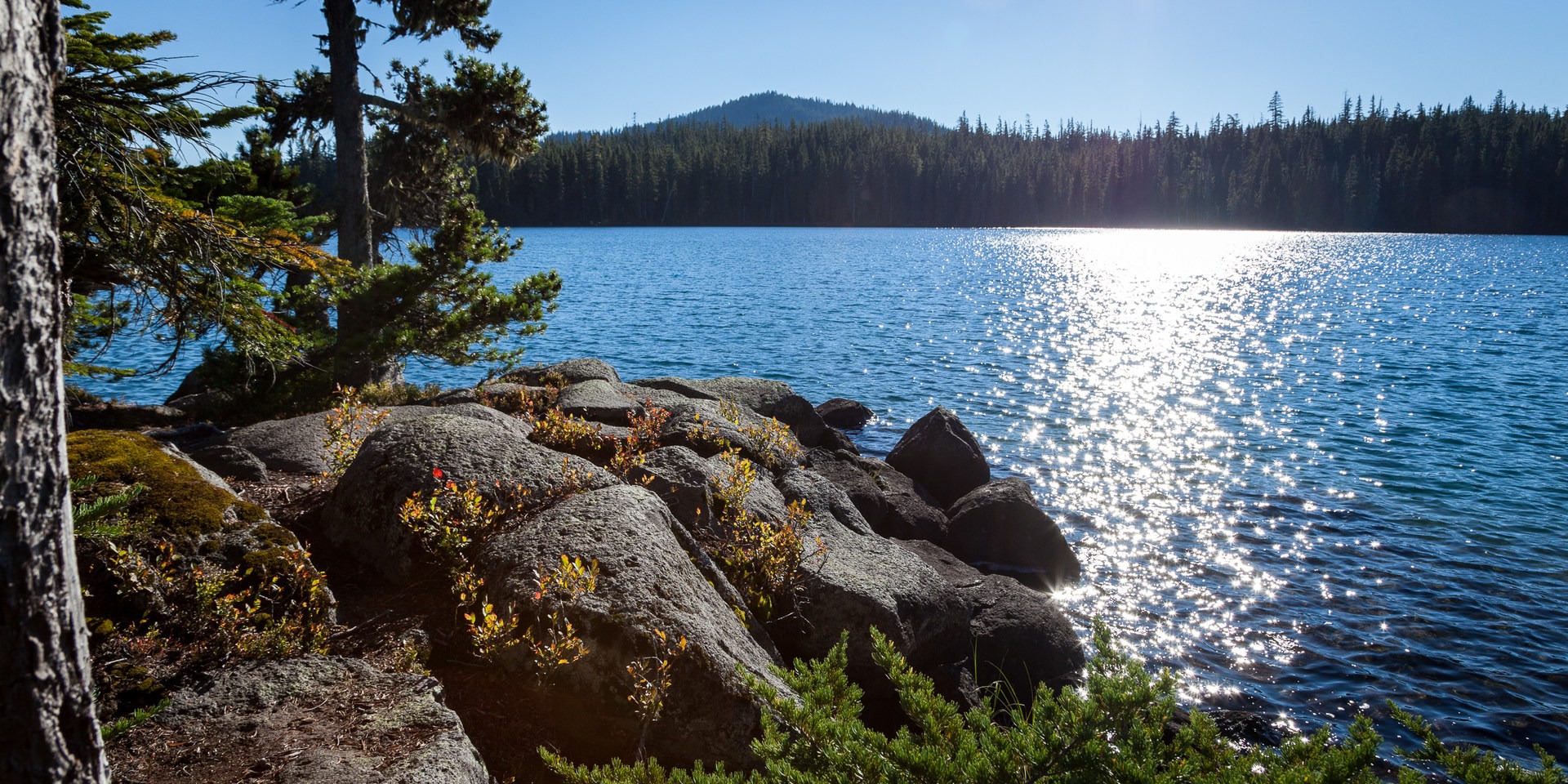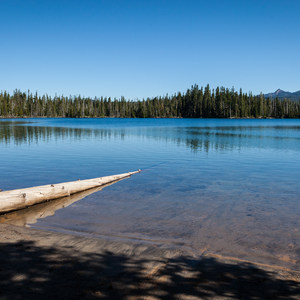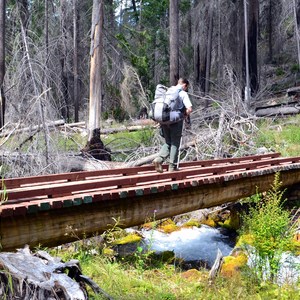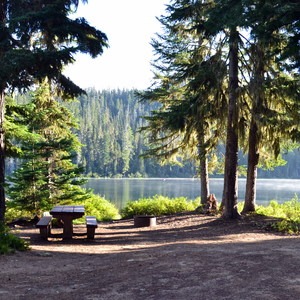Summit Lake is the smallest and most remote of the three-lake sequence that sits in the glaciated basin just east of Diamond Peak. Unlike Odell Lake and Crescent Lake, Summit Lake has no major, single stream to feed it. Instead, the pure, clear water you see in Summit Lake comes straight from years of Cascade snowmelt and rain, and in turn this lake becomes a primary source for the much larger and more popular Crescent Lake. The purity of the water that makes it to Summit Lake, combined with the relatively small area of the drainage basin that feeds it, gives the lake a characteristic clarity that is alternately sapphire, turquoise, and gold depending on lake depth.
But the most endearing characteristic may be the many small islands that rest just off shore all the way around the lake. They are basalt boulders capped with enough topsoil to support the native flora, each its own little Cascade terrain. Many are large enough for a tent or two and are ideal spots for camping or day use so long as you’ve made responsible plans for waste disposal. (Unfortunately, this has become an issue around Summit Lake.) Grabbing your own little island in the sun on a pristine Cascade lake with a view of Diamond Peak isn't a bad way to pass the time.
But in order to enjoy it, you’ll have to make sure you are visiting Summit Lake after mosquito season, which sometimes ends as early as August. If you have the misfortune of arriving before the mosquitoes have left, all the water clarity, Cascade views, pristine wilderness, and incredible sunsets won’t mean a thing; the predominant memory will be of trill, bloodthirsty, aerial mobs. Fair warning.
Know as well that all the roads around Summit Lake are primitive at best, and you’ll want a high-clearance, four-wheel drive or all-wheel drive vehicle to negotiate them. In particular, NF-398 from Crescent Lake to Summit Lake will take time to drive. Eugene visitors have the option of accessing NF-398 from the south side of the lake via NF-2154 and NF-21, which begins east of Oakridge. This route may be longer, and it still has very rough sections, but much less of them.
Between the 5,500-foot altitude, the rough roads, and the mosquitoes, the window of opportunity for visiting Summit Lake is small indeed (unless you consider some winter adventures!). While this poses some challenges for planning, it also protects this gorgeous and sensitive area from becoming too overrun. The upside is that you will enjoy warm, swimmable water, clear and warm summer nights, and a host of excellent hiking and biking opportunities. The Summit Lake Campground is a great base for exploration. The Pacific Crest Trail meanders around Summit Lake, and the section that heads north is one of the most popular approaches for Diamond Peak. If that hike seems a little much, you can always stop at Marie and Rockpile Lakes, or explore Timpanogas Lake a little farther down the road.






























Comments
Sign In and share them.